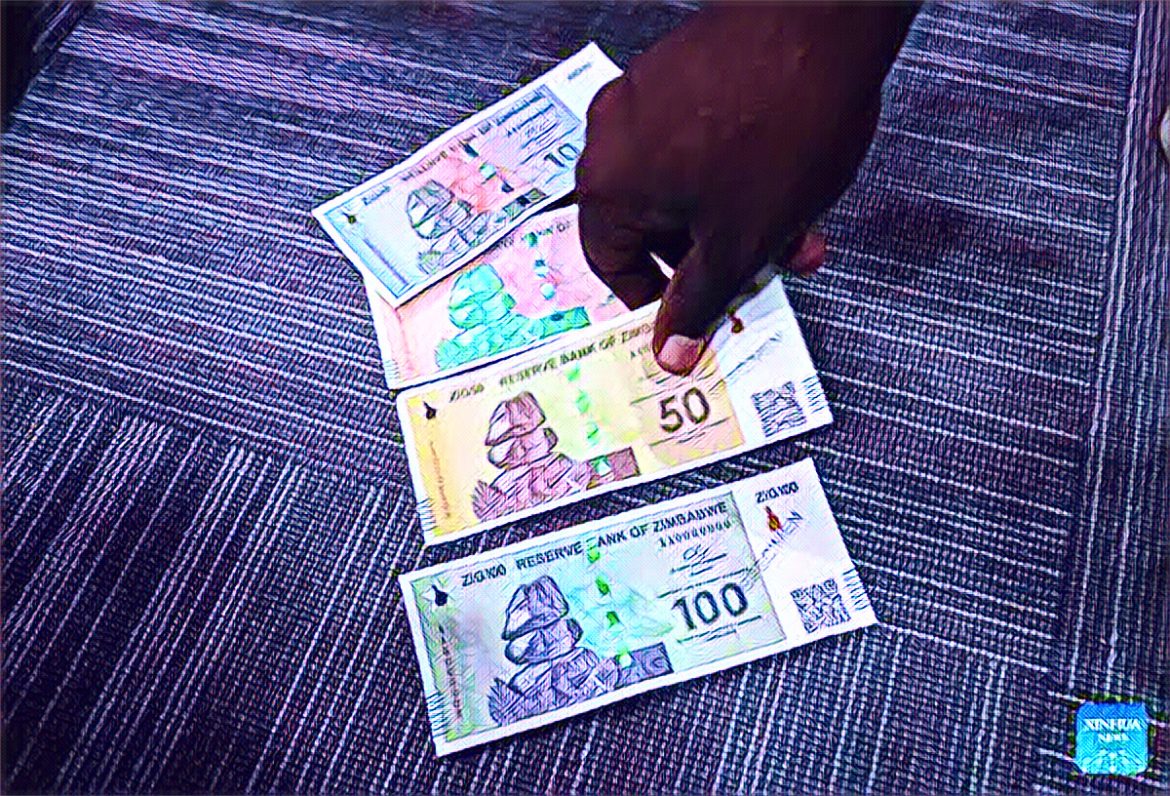Zimbabwe’s latest currency, the ZiG, experienced a 0.4% gain since its introduction earlier this week, backed by gold reserves. Despite attempts to stabilize through gold linkage, challenges persist in the banking sector. The ZiG, shorthand for Zimbabwe gold, witnessed a modest rise to 13.50 against the US dollar on Wednesday, marking a cumulative 0.4% gain since its inception. This stands in stark contrast to its predecessor, the Zimbabwe dollar, which steadily depreciated throughout the year until its discontinuation last Friday.
Authorities have pegged the value of the ZiG to the price of gold, aiming to mitigate volatility. Valued at approximately 7 US cents, correlating with the price of a milligram of gold, the ZiG seeks stability without reverting to the gold standard, according to central bank Governor John Mushayavanhu.
The central bank’s strategy involves leveraging inflation differentials between the Zimbabwe and US dollars, alongside fluctuations in a basket of precious minerals serving as reserves, to determine the ZiG exchange rate. This approach reflects Zimbabwe’s reliance on a blended inflation rate derived from both currencies, reflecting their prevalent usage in the country.
Gold, which has experienced a remarkable 20% surge since mid-February, remained relatively stable on Wednesday, providing a foundation for the ZiG’s valuation. Despite its backing by 2,522 kilograms of gold and $100 million in foreign-currency reserves, the ZiG represents Zimbabwe’s sixth attempt at currency stabilization since 2008. However, economists like Tony Hawkins argue that the latest reform lacks substantive change, merely revaluing the Zimbabwe dollar without addressing underlying structural issues.
The transition to the ZiG has introduced uncertainties, with the absence of an auction system leading to a reliance on a less structured market. This could hinder supply, impacting the ZiG’s pricing dynamics, according to Hawkins. While some financial institutions have adopted the ZiG for transactions, challenges persist in the banking sector. Retail outlets predominantly accept US dollars, leading to disruptions in government services and utility payments. Only half of the financial institutions linked to the national payments platform ZimSwitch were able to process ZiG payments by Wednesday.
ZimSwitch CEO Zabron Chilakalaka noted a slow uptake in transaction volumes, underscoring the ongoing adjustment period. However, financial institutions fully embracing the ZiG are now equipped to facilitate local transactions, enabling card payments at point-of-sale terminals. In an effort to stimulate the interbank market, the central bank intervened by selling foreign exchange to lenders at approximately 13.57 per US dollar.
Meanwhile, the ongoing acceptance of Zimbabwe dollar notes, slated to remain legal tender until month-end, faces resistance from some businesses. This rejection leads to a shortage of change, prompting businesses, particularly public transportation and markets, to round off prices to the nearest US dollar. Governor Mushayavanhu urged businesses to continue accepting Zimbabwe dollar notes until April 30, 2024, emphasizing the importance of maintaining stability amidst the currency transition.


